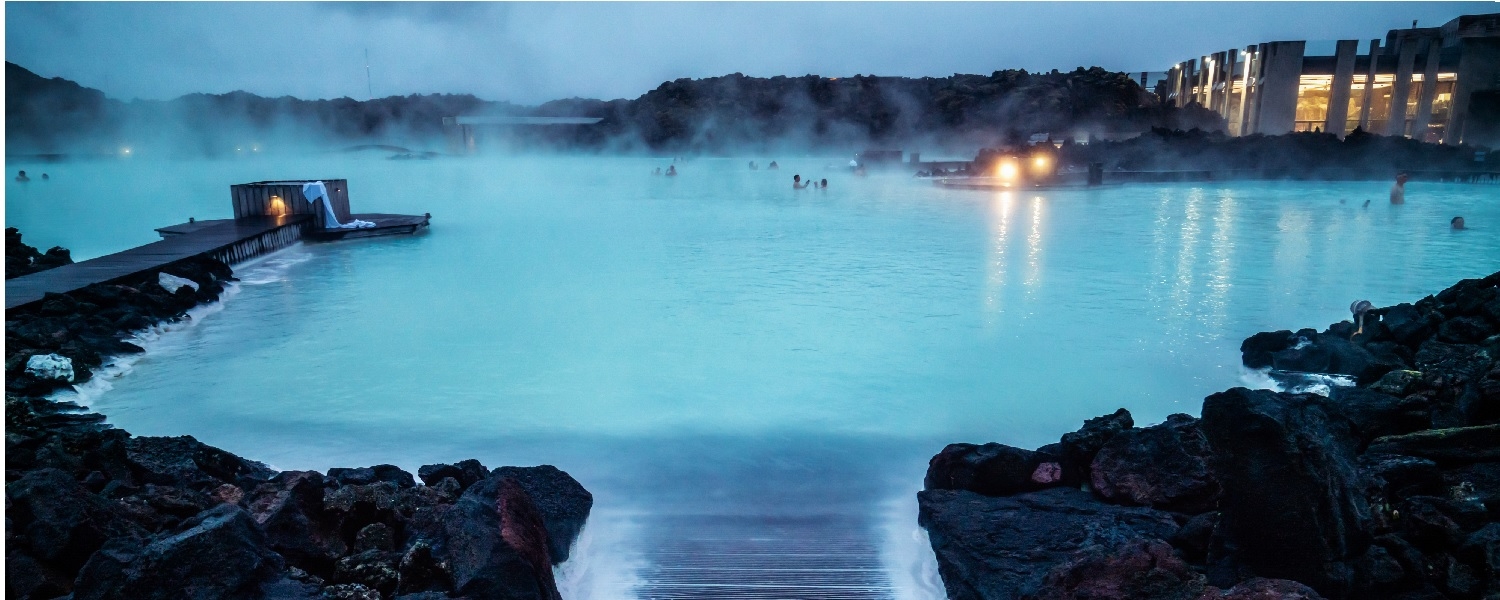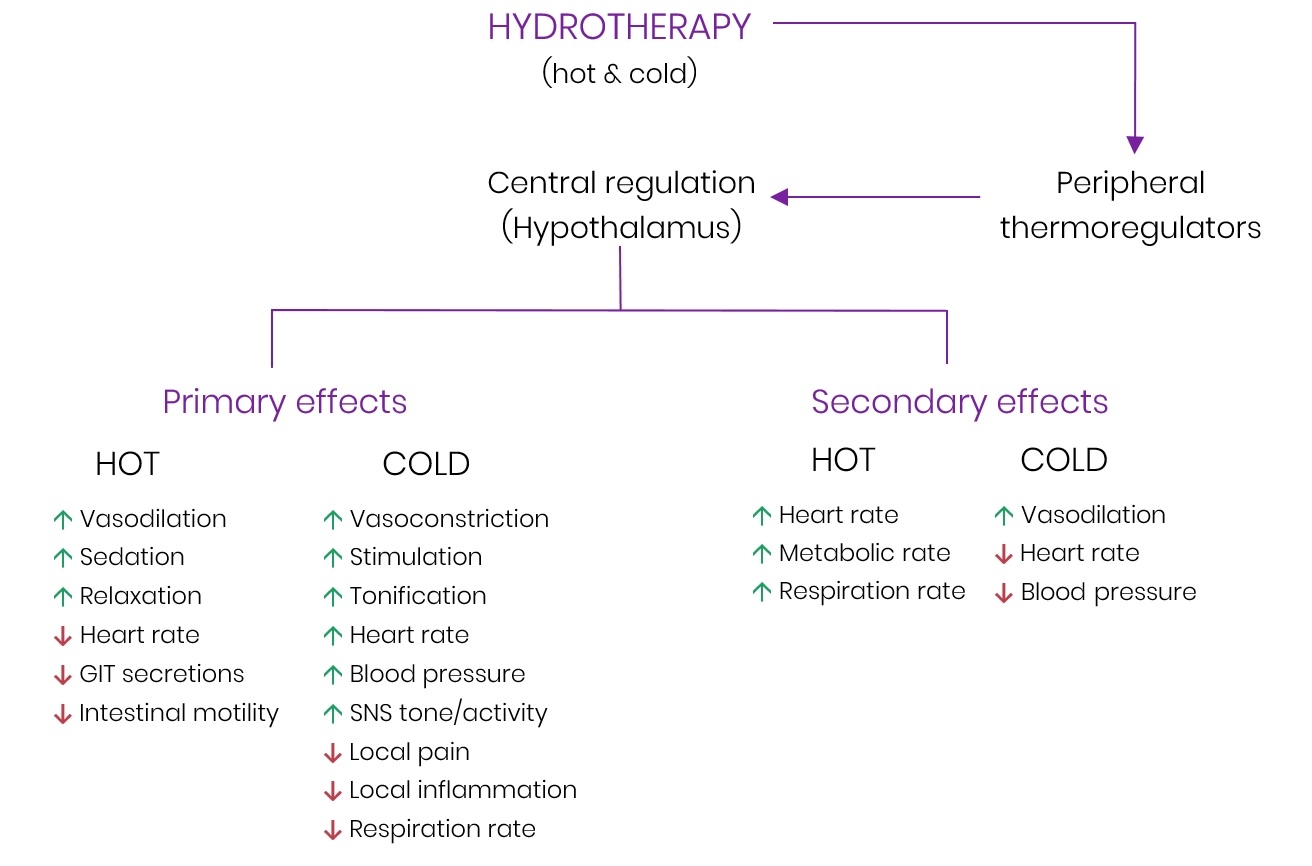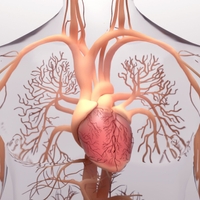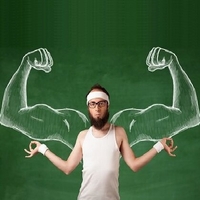
Naturopathic hydrotherapy is a clinical treatment tailored to address the specific needs of the patient. The following protocols are some examples of hydrotherapy treatments tailored by the practitioner for their patient to practice at home (1,2).
Wet sock treatment
Traditional use: Colds, headaches, sore throats, ear infections and other problems involving congestion or infection in the upper body and head.
Directions:
- Wet thin cotton socks with cold water, wring out well and place in freezer for 30 minutes.
- After warming in a hot bath or shower, place the cold socks from the freezer on feet.
- Damp socks are covered with a thick pair of wool socks and left overnight (these warm quickly and are typically dry in the morning, with an improvement in head congestion and pain).
Alternating sinus compresses
Traditional use: Hydrotherapy is often used in conjunction with steam or a neti pot to facilitate sinus relief.
Directions:
- Two cloths are required: one heated (soaked in hot water) and one cold (soaked in ice water).
- Place hot water cloth over face and sinuses (carefully wring using tongs) and leave in place 3 minutes.
- Remove hot water cloth and place cold water cloth over the same area of the face for 30 seconds.
- Repeat this alternating sequence two more times for a total of three alternating sequences of three minutes hot and 30 seconds cold.
Headache treatment
Traditional use: Application of hot and cold water to change blood flow and release muscle tension is used to relieve both muscular and vascular headaches.
Directions:
Migraine or vascular headache
- Soak one towel in a basin of ice water, wring out and place on the back of the neck. At the same time place feet in a basin of hot tap water (no more than 46°C). Leave for 20 minutes.
- If this does not bring relief then soak one towel in hot water. Place the hot wrung towel on the back of the neck and soak the feet in a basin of ice water for 20 minutes.
Tension headache
- Fill one basin with ice water and one basin with hot water (no more than 46°C). Soak one towel in each basin. Wring out hot towel and place on the back of the neck for 3 minutes.
- Remove this towel and replace it with the iced towel for 30 seconds. The hot and cold applications should be repeated three times each.
Contrast shower
Traditional use: A full body treatment alternating hot and cold water showers are used to improve the parasympathetic nervous system, support immune function and improve circulation, digestion, elimination and sleep.
Directions:
- Shower in hot water for approximately 5 minutes, with water running from the base of the neck down the front and back of the trunk.
- Follow the hot shower with a cold shower for 1-1.5 minutes, applying water in the same pattern.
- After the cold shower, dry off quickly and dress immediately to prevent getting chilled.
- Contrast showering is best done in the morning as it can be stimulating.
- It is important to note that the hot phase must be longer than the cool phase and that the process must finish with the cold shower.
- Larger contrasts in temperature between the hot and cold phases increase the therapeutic benefit. If done daily, the contrast can be increased as vitality increases.
- Most people gain benefit from this daily practice with only one round of hot and cold.
Alternating hot and cold foot baths
Traditional use: Immersion of hands or feet into alternating hot and cold water has been used for circulatory and nervous effects and local effects, particularly in the case of local injuries or inflammation.
Directions:
- Immerse hands in water to just above wrists or immerse feet from toes to just above the ankle or calf.
- Immerse in hot water for 3 minutes, followed by cold water for 30 seconds, and repeat three times.
- Always end the treatment with cold water immersion.
- Note foot baths are best performed at night to prepare for sleep, while hand baths are more stimulating and are best done earlier in the day.
Cautions and contraindications
There are few contraindications for naturopathic hydrotherapy; however, hydrotherapy may need to be avoided or used with caution in the following (2):
- diabetes or other conditions that impair neurological or cardiovascular function
- concurrent cancer treatment (mainly radiotherapy)
- pregnancy
- menstruation
- kidney disease
- high blood pressure (caution with full-body immersions)
- open wounds
Individual treatments may have specific cautions and contraindications, e.g. hot compresses are contraindicated in acute inflammation, as they may exacerbate symptoms by increasing local blood flow. Sitz baths are contraindicated in acute infection, menorrhagia, fibroids and during menses.
Common side effects of hydrotherapy include light-headedness, headache, nausea, heart palpitations, insomnia, and hyperventilation, particularly in first-time applications (2).
Water immersions may have side effects such as skin maceration, skin softening, oedema, hyperthermia or hypothermia, and excessive vasodilatation or vasoconstriction (3,4). Therefore, in treatments such as full-body immersions, it is critical to monitor patient hydration and temperature before and after interventions.
Mechanisms of action
The primary goal of hydrotherapy is to disturb the body's normal functional state to balance physiological and cellular responses (i.e. promote homeostasis or stress adaptation) (2). This disturbance is mainly achieved by utilising water's thermal properties (also known as thermotherapy) (5).
Thermal effects
Temperature changes are sensed by the body via nerve endings in the skin and muscle and result in neural reflex effects controlled by the brain and spinal cord. Thermoregulatory pathways are activated via the hypothalamus and central nervous system (CNS), leading to activation of the autonomic nervous system (ANS). In acute heat exposure, this leads to vasodilation and improved circulation, while cold exposure causes vasoconstriction of surface blood vessels (5,6)
Heat application rapidly increases cardiac output, heart rate and other physiological processes controlled by the ANS, including metabolic and respiratory rate (2,7). On a cellular level, heat applications can induce adaptive hormesis mechanisms which are thought to be comparable to exercise. These mechanisms include increased nitric oxide bioavailability, improved endothelial function, increased insulin sensitivity, production of heat shock proteins and reduced oxidative stress and inflammatory pathways activity (8,9,10).
Cold application increases sympathetic nervous system activity, metabolic processes, heart rate and blood pressure, and decreases respiration rate (11). Cold applications also have analgesic, immunomodulating and anti-inflammatory effects (11,12).
The ANS's effect is one of the key distinguishing features of naturopathic hydrotherapy from other types of hydrotherapy. Alternating hot and cold treatments used regularly over time can help to achieve a better balance between the sympathetic and parasympathetic nervous systems and support normal physiological function (1,2).
Mechanical and chemical effects
The mechanical effects of water are also utilised when hydrotherapy is provided via immersion therapy. Hydrostatic pressure promotes venous flow return, and lymphatic flow by increasing pressure in the interstitial spaces (13). Buoyancy reduces gravitational tension on the body, resulting in pain reduction and enhanced mobility (14).
The chemical effects of water are elicited via ingestion of water or colonic irrigation; or immersion in water with additives such as herbs and minerals (1).
Figure 1. Hydrotherapy thermal mechanisms of action

Takeaway on naturopathic hydrotherapy
- Hydrotherapy is a modality that utilises the various properties of water to promote health or treat disease.
- Hydrotherapy has been used in ancient medicine systems, and modern naturopathic hydrotherapy is attributed to a resurgence initiated by Nature Cure pioneers in Europe during the 18th and 19th centuries.
- The therapeutic effects of hydrotherapy are largely mediated by water's thermal effects on the autonomic nervous system, specific effects on circulation, and metabolic, respiratory, neuroendocrine, and immune system function.
- The primary goal of hydrotherapy is to disturb the body's normal functional state to balance physiological and cellular responses. This principle underlies the core naturopathic philosophy, Vis Medicatrix Naturae, to stimulate the body's innate healing ability.
- Although several applications have been studied in clinical trials, clinical evidence is currently limited to chronic heart disease, fibromyalgia, rheumatoid and osteoarthritis, sports recovery, stress, chronic obstructive pulmonary disease, and diabetes.
- There are many different hydrotherapy treatments, ranging from simple treatments administered at home to those requiring specialised equipment or access to thermal spas.
- Although there are few contraindications, hydrotherapy treatments should be administered under a healthcare practitioner's direction and typically as an adjunct to conventional or naturopathic treatments.






